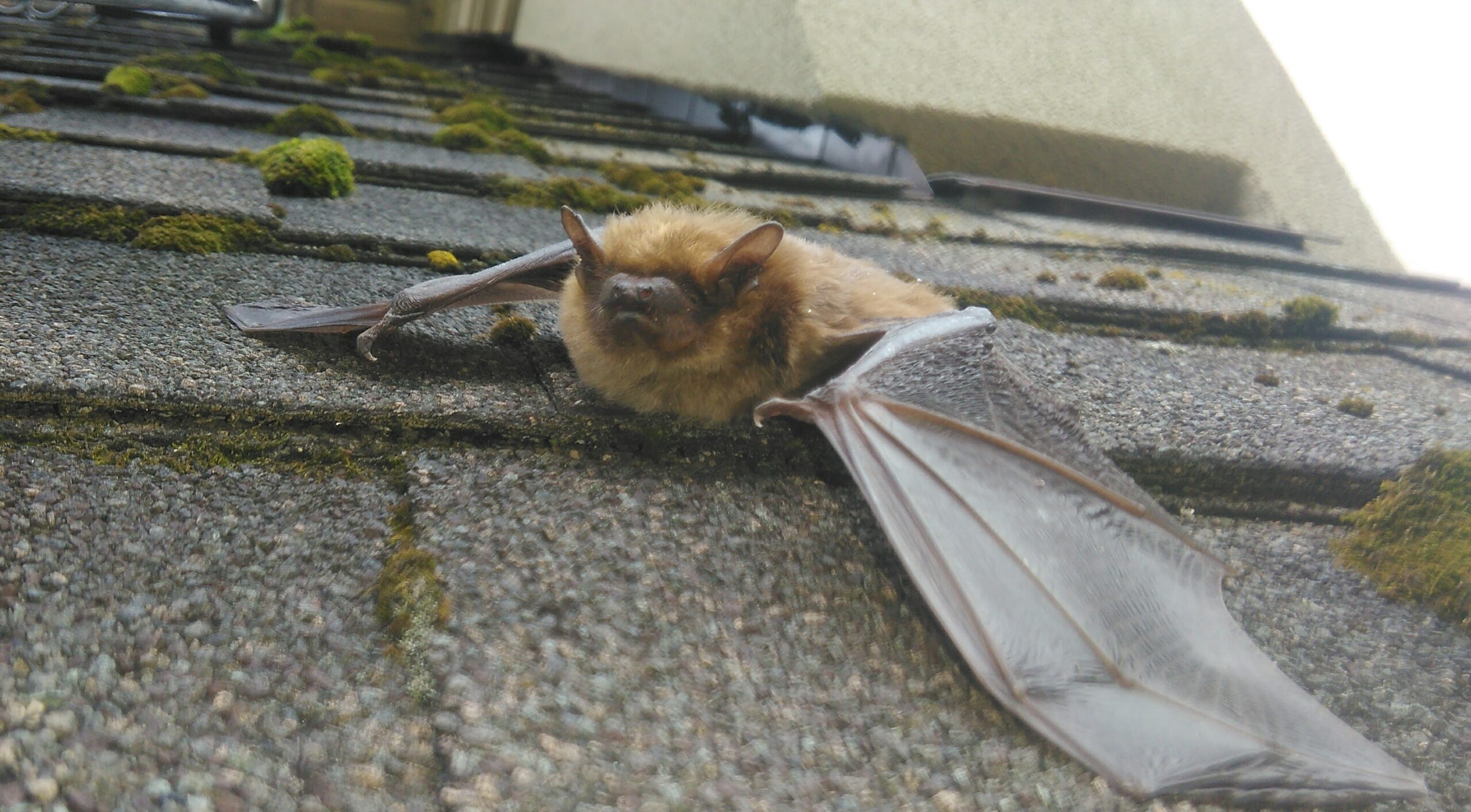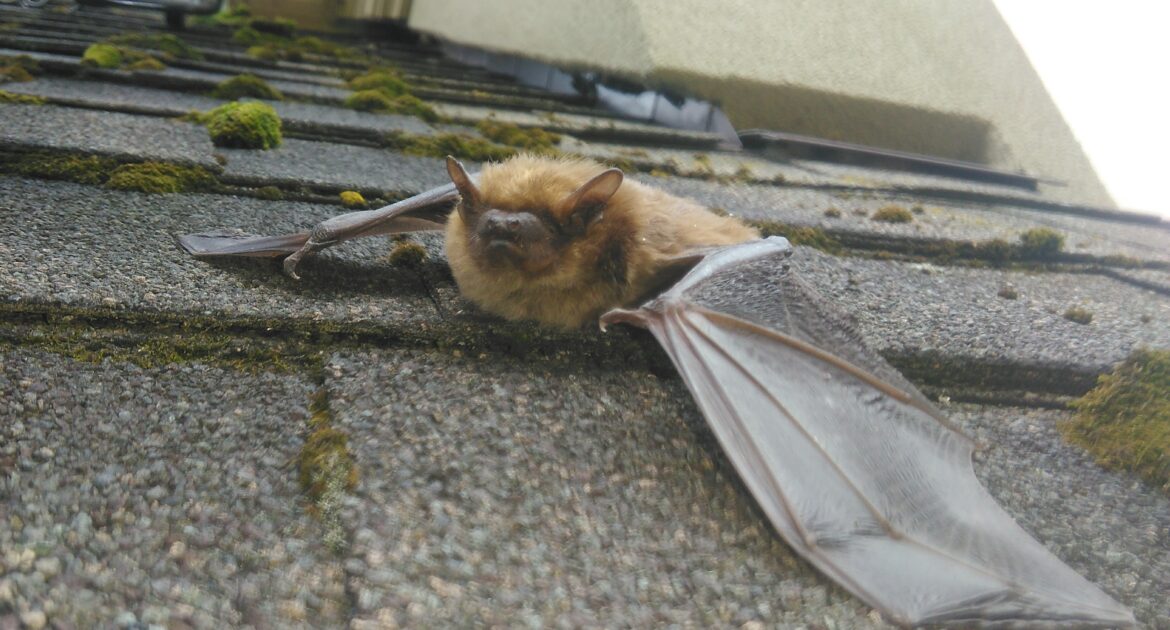Wondering what to do if there is a bat in your attic? Bats might not be on your list of favourite houseguests, but to them, your attic can feel like the perfect place to settle down. Bats are fascinating animals, and one of their most remarkable abilities—echolocation—not only helps them survive but also leads them right into your home’s most unexpected entry points.
Why do bats find attics so appealing? Warmth, protection from predators, and proximity to food sources all play a role. But understanding bat echolocation is key to knowing how they find their way into your attic and why they stick around. Keep reading to learn more about how echolocation works, why it makes attics so inviting, and what you can do if you’re dealing with bats roosting in your attic. We can tell you that the first step should be to call experts in bat removal in the Durham region!
What Is Echolocation?
Have you ever wondered how bats effortlessly navigate through the night skies and find their way to hidden corners like attics? It’s all thanks to an extraordinary ability called echolocation. Echolocation is a process where bats emit high-pitched sounds that bounce off objects, creating a mental “map” in their minds. Think of it as their very own natural sonar system.
With echolocation, bats have a remarkable way of interpreting the returning echoes. These echoes provide vital information about their surroundings, helping them locate obstacles, find food, and even identify suitable shelter. It’s like having a built-in GPS! By emitting these sounds and listening to the echoes, bats can zero in on flying insects with incredible accuracy, even in complete darkness. Their unique echolocation abilities allow them to avoid obstacles and safely navigate through their environment.
For bats, echolocation is not just a survival tool but a fascinating glimpse into their extraordinary world. By harnessing the power of echolocation, bats have mastered the art of finding food, avoiding hazards, and seeking out suitable roosts. So the next time you see a bat flying around your home, remember that it’s using the remarkable power of echolocation to navigate its way through the night sky and find its place to roost.
How Echolocation Helps Bats Find Attics
You might wonder how bats manage to find their way into your attic, especially when it seems like there’s no obvious entrance. That’s where echolocation comes into play. Unlike many other animals, bats can identify incredibly small gaps and openings that we might not even notice.
Tiny Entry Points
Echolocation is so accurate that bats can detect gaps as tiny as half an inch. This includes spaces near roof vents, loose shingles, or the edges of siding. What may seem like a negligible crack to you is a wide-open doorway for a bat.
Precision Detection
Bats’ ability to interpret echoes with such precision means no small opening goes unnoticed. They can pick up on soft or hollow sounds that indicate an open space. This makes them exceptionally skilled at detecting entry points to attics or other concealed areas.
Acoustic Appeal
Interestingly, attics often amplify sounds, creating an acoustic environment that enhances echolocation. The open spaces and high ceilings allow echoes to travel well, making attics easy for bats to map out and navigate.
Why Attics Are Inviting to Bats
If you have bats roosting in your attic, there’s a reason they picked your home. Bats are resourceful creatures, and certain features of attics make them an irresistible option for roosting.
Bats seek out warm, sheltered locations to protect themselves from the elements and predators. Attics offer the perfect refuge, especially during cooler months. With steady temperatures and a secure space away from hawks, owls, and other predators, attics provide survival advantages for bats.
If your home is in a suburban or rural area, you may live near some of the most attractive food sources for bats—insects! Whether it’s a backyard garden alive with mosquitoes or a patch of nearby woods, bats love having an abundant food supply close by. Your attic serves as the ideal home base.
Bats evolved to live in caves, which are naturally dark and quiet. Your attic’s cozy corners, lack of regular human activity, and absence of bright lights mimic these conditions perfectly. This makes attics an inviting option for bats looking to roost.
Risks of Having Bats in Your Attic
When it comes to bats in your attic, it’s essential to be aware of potential health risks. One concern is the accumulation of guano, or bat droppings, which can pose health hazards.
Over time, guano can lead to the spread of diseases like histoplasmosis, caused by inhaling fungal spores found in guano. To ensure the safety of your family and home, it’s crucial to address the presence of bats and take appropriate measures for their removal.
In addition to health risks, bat guano can also cause structural damage to your home. The accumulation of guano can seep into wood and other materials, potentially compromising the integrity of your attic and insulation. This can result in expensive repairs and energy inefficiency. By addressing the issue of bats in your attic promptly, you can prevent further damage to your home’s structure.
To protect both your home and the bats themselves, it’s important to seek professional help like us at Skedaddle for humane removal. This ensures the bats are free to relocate to suitable roosting areas, preserving their ecological role in controlling insect populations.
Additionally, it is crucial to implement proper bat-proofing techniques to prevent future infestations. By sealing off entry points and ensuring your attic is no longer an inviting space for bats, you can create a bat-friendly environment while keeping them out of your home.
Prevention Measures to Keep Bats Out
If you want to avoid the hassle of bats roosting in your attic, proactive prevention is key. Here’s what you can do:
1. Seal Entry Points
Start by inspecting your home’s exterior for vulnerable areas like:
- Roof vents
- Cracks in siding
- Gaps around chimneys
Use caulk, steel mesh, or other materials to seal these entry points.
2. Schedule a Professional Inspection
A professional inspection is often the best way to ensure your home is fully secured. Experts can identify weak spots you might miss and recommend tailored solutions to bat-proof your home.
3. Use One-Way Doors
For existing bat problems, one-way doors allow bats to exit but prevent them from re-entering. This method ensures the bats leave safely without becoming trapped inside your home.
Protect Your Home With Skedaddle Humane Wildlife Control
Are bats roosting in your attic? Understanding bat echolocation is fascinating, but it also sheds light on why bats find attics so appealing. Knowing how they detect entry points and what makes attics such an attractive roosting spot can help you better protect your home.
If you’re wondering what to do if there is a bat in your attic, give us a call. At Skedaddle Humane Wildlife Control in Durham, we specialize in humane removal and prevention. Our team will conduct a thorough inspection, safely remove any uninvited guests, and seal your home to prevent future visits.
Don’t wait for the problem to escalate. Contact us today to request a quote, schedule an inspection, and take the first step to protecting your home.




